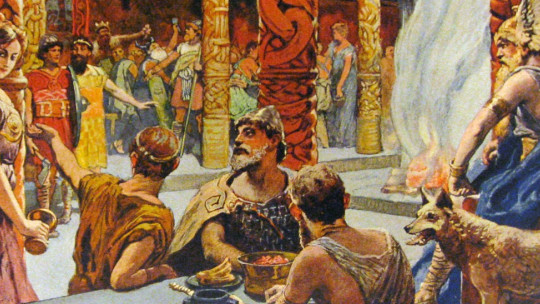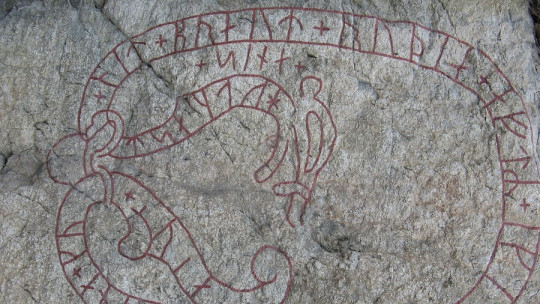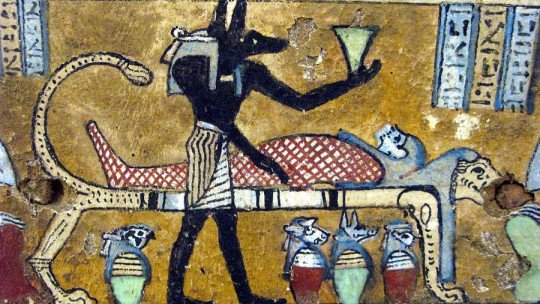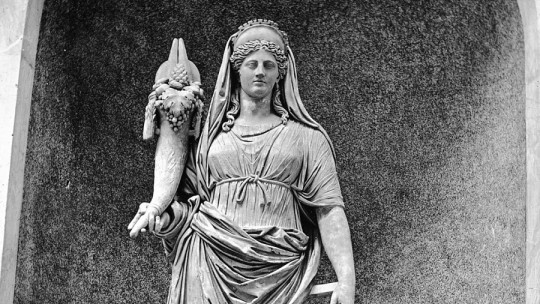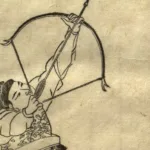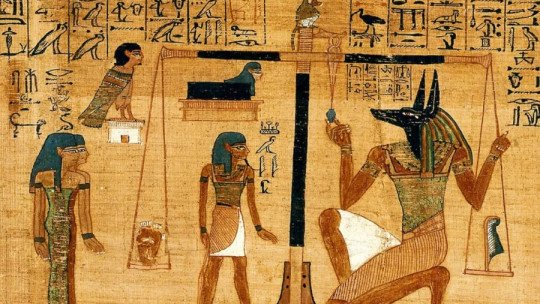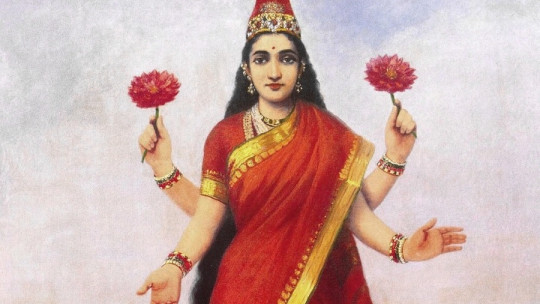Viking mythology is not unknown to most. In fact, we constantly find it in movies, novels and even comics. From The Lord of the ringsby Tolkien, which includes a multitude of elements from Norse mythology (without going any further, Middle Earth, which is directly inspired by the Scandinavian Mig-gard) to comic characters such as the famous Thor.
The Vikings were an eminently warrior people. In fact, his admiration for warriors fallen in combat had no limits: that was the most appreciated death. For this reason, their mythology is full of myths that speak of victories on the battlefield, and even their particular Armageddon, Rágnarok, is a hymn to defeated warriors, since even the gods themselves perish in the fray. In this article we propose a brief but intense journey through Viking mythology through 5 of its most famous myths
Great myths of Viking and Scandinavian mythology
The word “vikings” is quite general; It refers to the peoples who, coming from the north, attacked Europe in the Middle Ages. Thus, as these are various peoples (including Swedes, Norwegians and Danes), we have preferred to use the term “Scandinavian” to refer to their mythology. Thus, we will talk about Scandinavian mythology and its best-known myths.
1. The giant who gave rise to the world
In the beginning, and as in all mythologies, only Nothing existed. However, the Scandinavian case is peculiar because, On both sides of Nothingness, there were two kingdoms: that of fire, called Múspelheim, and that of ice, Níflheim When these two realities met in Nothingness, an enormous explosion occurred that gave rise to life.
From this explosion a colossal giant emerged, Ýmir, from which the rest of the giants descend. In Scandinavian mythology, giants are usually dark and evil creatures, but the truth is that even the gods have some giant blood in them. Tradition explains that those who were formed from the union of fire with Elivágar, one of the poisonous sources of the kingdom of ice, carried the poison in their souls and that is why they were evil. The others, like the god Buri (ancestor of the gods), were good.
We find this dichotomy between giants (Evil) and gods (Good) in other mythologies; for example, in Greek, where the Titans symbolize Chaos, and the gods, Order. In both mythologies, both coming from a primary Indo-European source, gods and giants/titans face off in a cosmic battle.
The giant Ýmir confronted Odin and his brothers and died. The myth tells us that, from the corpse of the giant, the gods built the world From the abundant blood that flowed from the dead body, oceans, seas and rivers were formed. Next, Odin and his men took the giant’s flesh and molded the earth with it. From this land arose the race of dwarves.
The gods did not stop here. With the bones of Ýmir they created the rocks and the mountains; with hair, trees and plants. Then they suspended the enormous skull of Ýmir above the land they had created, and placed four dwarves at the four ends (North, South, East and West) to hold it eternally. Finally, the giant’s disintegrated brain gave rise to the clouds.
When the gods looked at their creation, they realized that everything was too dark. Then they took the ashes of Múspelheim, the kingdom of fire, and scattered them across the heavens; In this way, the stars were born.
2. Odin hangs from the cosmic tree to achieve wisdom
As we can see, the world of Scandinavian mythology is quite complex. There are actually different lands in the Viking universe: nine, to be exact. Each of them hangs from a branch of the cosmic tree, called Yggdrásill In the roots of this tree lives an enormous serpent-dragon, Níthog, who eternally gnaws at the bark of the tree, threatening to destroy it and thus cause the end of the worlds: Rágnarok.
One day, Odin, the lord of the celestial gods, wanted to know what the secret of the runes was. Whoever knew these secrets would be endowed with immense power and would be above other creatures. The only way to reveal that secret was to pass a terrible test: Odin had to hang by the neck from one of the branches of Yggdrásill, for nine days and nine nights. The test was truly terrifying, and even Odin, the father of the gods, was afraid. For nine days and nine nights he hung from the cosmic tree, swaying in the hurricane currents of air and enveloped by absolute blackness.
Finally, Odin passed the test and was granted the secrets of the runes. He became governor of gods and men and established his dominions in Asgard , the abode of the celestial gods. It is necessary to clarify that, in Scandinavian mythology, there were two classes of gods: the Aenir, to which Odin, his wife Frigg or Thor, among others, belonged, and the Vanir, who were minor gods, more related to fertility, the sea and crops. It is not unreasonable to venture that the Vanir were much older gods, and that the arrival of the Indo-European peoples, who had a pantheon more related to the elements, introduced the Aenir gods into Scandinavian culture. From then on, both families of gods coexisted.
3. The gods eat apples to always be young
The Aesir always looked young and beautiful. And this was not because, as gods, they were immune to the passage of time. The Scandinavian gods, like most gods of Indo-European cultures, were linked to becoming and life. Actually, The only thing that differentiated them from human beings was their extraordinary powers ; but old age, weakness and decay could take their toll on them at any time.
But Odin and his companions had a secret. In the lands of Ásgard there was a beautiful garden, where Ídunn, the goddess of spring, lovingly cultivated some beautiful and tasty golden apples. These golden fruits had the gift of granting eternal youth and beauty, which is why the gods ate them daily. Ídunn was in charge of taking care of and protecting them, which is why she never left the walls of Ásgard. The apples could never be left alone; They were an overly coveted prize.
But one day, Loki, the cunning being who lived with the gods, did his thing again. He fought with a colossal eagle that grabbed him with its steel talons and lifted him into the air. Loki begged to be let go, but the eagle, who turned out to be a powerful giant, refused to do so.
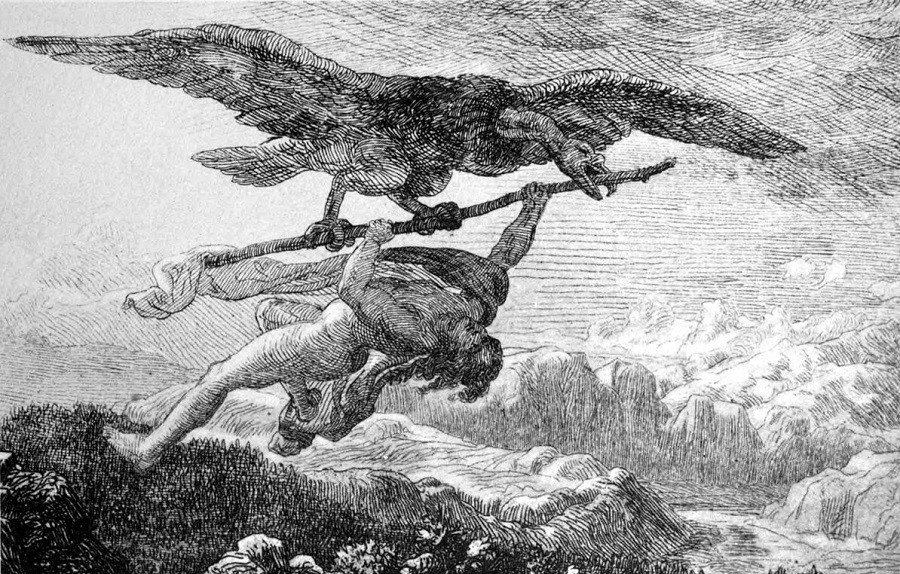
Finally, Loki made a pact with the giant : He would trick Idunn out of the fortress of Ásgard, and would also get her to take her golden apples with her. The giant-eagle agreed, and set Loki back on the ground.
This is what the trickster did. The next day he appeared before the prudent Idunn and told her that she had seen, outside the walls, a tree very similar to her apple tree. She smiled sweetly and shook her head; It was completely impossible, her apples were unique. However, Loki insisted so much that doubt settled in Idunn’s heart. Full of curiosity, he agreed to leave Asgard with a small chest full of her apples kept in his chest, so that he could compare her fruits with those that, supposedly, were outside the fortress.
The misfortune did not wait. The giant eagle grabbed poor Idunn by her back and flew her away. The poor goddess, very scared, had not let go of her little box full of apples.
Upon learning of Idunn’s disappearance, the gods panicked, since, Without the golden apples, old age and weakness would begin to devour them When Odin learned that Loki was to blame for everything, he threatened to torture him if he did not find a solution. Loki, repentant, asked Freyja, the goddess of love, for her feather cloak so he could fly, transformed into a falcon, to the abode of the giant-eagle and rescue Idunn.
The undertaking was very difficult, and it is true that Loki was not the strongest being in creation, but he was the most cunning. Taking advantage of the fact that both the giant and his daughter had left, he perched, still in his falcon form, on the window of the tower where Idunn was imprisoned, and said to her: “Don’t be scared! I’m Loki. Now I will turn you into a nut, and I will catch you with my claws and take you out of here.”
That’s how it went. With the nut in tow, Loki took flight towards Asgard. However, the giant’s daughter, Skadi, had seen it all, and she warned her father. Soon An intense race began through the skies, in which the giant eagle madly pursued the falcon When they approached the walls of Asgard, the gods prepared a mountain of timber. Loki entered Asgard like an exhalation, and behind him did the giant. At the moment when the eagle touched the pile of wood, the god Tyr threw a flaming torch, which immediately ignited the mountain and engulfed the eagle’s body in flames.
The giant was dead, and Loki and Idunn were safe. The young goddess returned to her normal appearance and distributed the golden apples among the restless gods. That night, at the banquet, all the Aesir were young and beautiful again.
4. Sigurd and the dragon
Sigurd, also called Siegfried in some sagas, is the hero par excellence of Scandinavian mythology He was the son of Sigmund, a powerful king. When his father dies, his mother remarries the son of the king of Denmark. The new husband, Alf, places Sigurd under the guardianship of a blacksmith named Regin, who is none other than the brother of the dragon Fafnir, a hideous creature who guards a treasure of incalculable value.
In other versions, Regin is Mime, a dwarf. Be that as it may, he is envious and full of greed. He covets Fafnir’s treasure, but is aware that he alone cannot defeat the fearsome dragon. Therefore, he uses his cunning to deceive the young Sigurd, and convinces him to take his horse Grani and his sword Gram, forged from the remains of his father’s invincible sword, and set out in search of of the treasure. “I will accompany you,” Regin tells him, “I know those lands and I know the way.”
Thus, young Sigurd and his tutor arrive at the cave where the beast lives. When Sigurd was already raising his sword to go in to kill the creature, Regin warns him: “Make sure that not a drop of the dragon’s blood touches your skin, or you will be burned to death.” Sígurd was already beginning to mistrust the advice of his tutor, because he sensed that a dark intention was hidden behind it. And so it was. Thanks to a wise old man that he met on the way to the cave, and to the birds that advised him along the way, Sigurd learned that Regin had lied to him; The blood of the dragon did not kill, but rather granted immortality which was precisely what Regin did not want for Sigurd.
The young man waited for the dragon to come out to drink from the stream that surrounded the cave, and then, using his cunning, his strength, and his father’s invincible sword, he killed the creature. Immediately afterwards, he took off his clothes and bathed in the torrent of blood that flowed from the monster’s wounds, with the bad luck that a twig had stuck to his back, causing part of his body to be exposed. mercy of death. Sígurd, for the moment, did not realize this. After his immortality bath, He entered the cave and took a helmet and a magic ring : the first transformed people, and the second granted its wearer everything they desired.
When he returned to Regin’s side, while they were both roasting the dragon’s heart to eat, the blacksmith tried to stab the young man. His intention was to get him out of the way so he could keep all the gold. Sigurd was faster and, with one swift movement, cut off his head. Then, full of curiosity, he entered the cave again. What was his surprise when he saw, among the piles and piles of magnificent gold, a huge and luxurious bed, on top of which lay what looked like a dead or sleeping warrior.
Sigurd approached the recumbent figure and removed his helmet. His surprise increased when he saw that it was not a warrior, but a beautiful woman. Suddenly, she opened her eyes and stared at him. Then she smiled. “I am a Valkyrie of Odin,” the young woman explained. “The lord of the gods promised a warrior victory in combat, and I disobeyed his orders and caused the warrior’s defeat, because he did not deserve to win. Odin was furious and condemned me to remain here, asleep. My destiny was to marry the first mortal who appeared in the cave. Fortunately, it was you.”
Sígurd smiled and kissed her on the lips. Sígurd and Brýnhild, as the Valkyrie was called, were married. The myth, however, does not end here. The adventures of Sígurd and Brýnhild continue. We leave you to investigate to find out the end of this fascinating story.
5. Rágnarok or the “destiny of the gods”
In Scandinavian mythology There is a terrifying story about the end of the world, very similar to the Christian Apocalypse , in which the forces of Evil (the monstrous creatures of primal Chaos) face the forces of Good (the order established by the gods) in a cosmic struggle. The myth tells us that the first to realize the arrival of Rágnarok will be the human beings, who inhabit Mig-gard (the Middle Earth), since wars and murders between family members will abound. Desolation will spread across the land, and then will come a monstrous winter.
The giants of Múspelheim, the World Serpent, the wolf Fenrir, the souls of Hel (the monstrous kingdom where sinful humans end up), led by the traitor Loki, will confront the gods. Odin will ride on his horse Sléipnir, Freyja will run in her chariot pulled by cats, Thor in his chariot pulled by goats; They will all be followed by the souls of Valhalla, the warriors who died in combat, and who, in reward, live eternity in an endless banquet. However, it will all be in vain. Chaos will win, and the world of the gods will come to an end.
Legend says that two human beings, a man and a woman, during the cosmic battle, will hide in the Yggdrásill tree , and that these will be, effectively, the parents of the new humanity. Because after Chaos, Order will come again, and the gods will be reborn in a new era of stability and peace.


